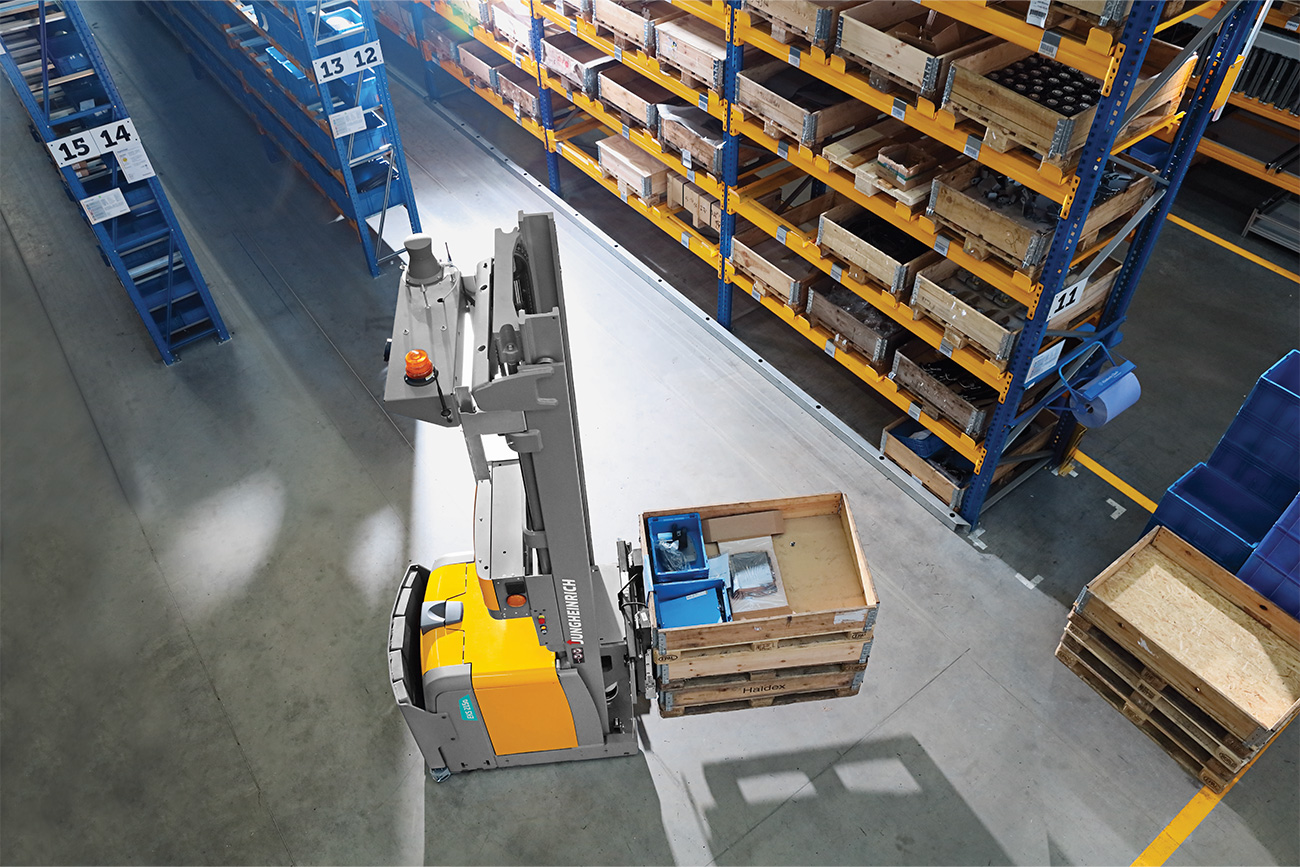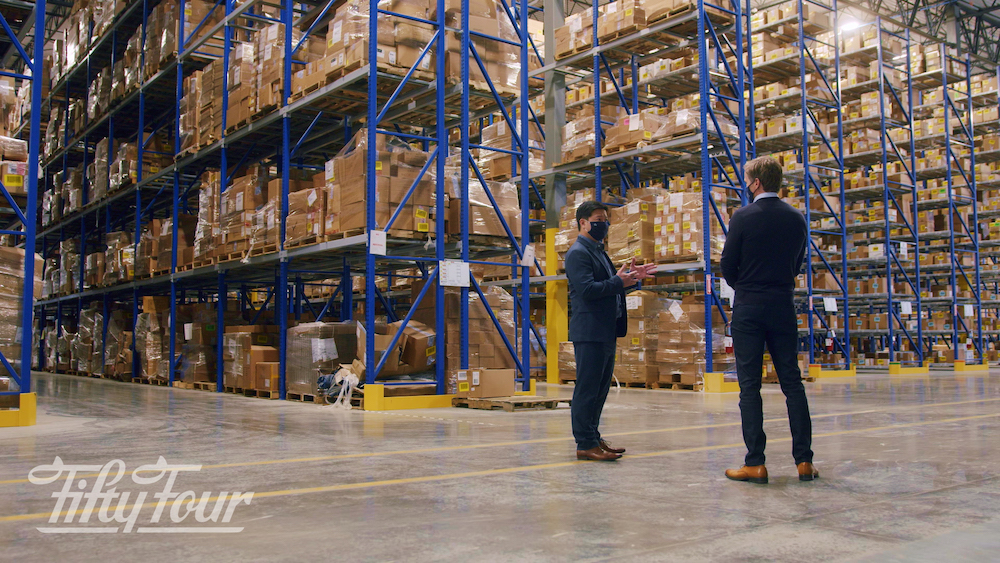
Integration is a big buzz word in the material handling and distribution center warehouse world these days. But what exactly does it mean in relation to you and how are the benefits of integration applied to your operations?
With today’s climate of massive and fast-growing increases in e-commerce, those who want to keep up need to incorporate practices and technology that spur warehouse movement to be done more rapidly and more accurately. Material handling and DC operations that are staying relevant in this age are moving product in and out of their warehouses at speeds never seen before. And that’s not all. Learning how to process returns just as quickly is imperative. Add to this the critical nature of last-mile delivery and material handling and DC decision makers have their hands full trying to keep up.
Integrating your material handling and DC warehouse systems means putting the different entities together and having them work as one. There are so many benefits to integrating your warehouse systems. Some of those include:
- Inventory – No longer the annual headache that tends to shut down operations for a few days. Workers maintain your inventory in real time as products come in, go out and, in some cases, come back in again.
- Productivity – We are always looking for ways to increase productivity. Imagine a warehouse where everything has a place and everything is in its place. No more wasted time spent searching for some buried product that was stored in the wrong place.
- Synchronization – From receiving to shipping to delivery, all pieces of the warehouse puzzle are synchronized to form one efficient and fast supply chain.
- Improved Communications – When everybody and everything is on the same page, communication between vital moving parts is vastly better.
- Reduced Human Error – Integrated systems mean less human intervention along the way, decreasing the chance for error.
All of these benefits are realistic under integration and automation of warehouse processes. When your material handling and DC warehouse systems are talking to each other and working together as one, you’ve achieved integration. One area we haven’t talked about is how integrating your forklift fleet with your warehouse management system can be beneficial.
What Is a Warehouse Management System?
All of the benefits we listed above are possible with a good warehouse management system (WMS) set up to keep everything running smoothly. With the right software system for the size of your operation, you can manage everything from order to store shelf or purchaser’s door from within your WMS. Whether you are considered a small-, mid- or large-sized operation, there are a variety of WMS packages out there. Find a material handling dealer that you trust to help you decide which is best for your application.
A WMS touches every piece of material handling and DC warehouse processes, including:
- Inventory – including managing expiration dates
- Shipping – including labeling and packing
- Receiving – including updating inventory
- Labor – including reserving human employees for more critical tasks
- Delivery – including assigning routes
- Stocking – including putting pallets and products in identified areas
- Picking – including bringing products to a central area for prep for shipping
Optimize is another current buzzword in the material handling and DC warehouse world. A good WMS will optimize your operations. In other words, make the best and most efficient use of your resources so you can remain competitive in an ever-changing landscape.
Integrating Your Forklift Fleet
In a busy material handling and DC warehouse situation, you’ll likely see a number of forklifts busily loading and unloading trucks at the dock, taking pallets to and from the dock and the warehouse storage and moving product and pallets in and around for various other warehouse functions, such as packing and labeling. In one warehouse forklift fleet, you might see:
- Counterbalance forklift – Forks in the front, weight in the back. Raises and transports items and pallets over short distances. Works in a variety of situations, including indoors and outdoors and inside of trucks. Sometimes called the workhorse of the material handling world.
- Pallet Jack – No large loads but excellent in tight and small spaces for moving product around.
- Walkie Stacker – The taller cousin to the pallet jack for when you need to reach greater heights. Designed to be walked behind and used manually.
- Order Picker – Designed to pick varying sizes of product in one load. Not designed for moving pallets, but able to reach high enough to gather the necessary items.
- Reach Truck – Able to move pallets up and down in tight and narrow spaces where counterbalance forklifts may not fit.
There are other pieces of material handling and DC warehouse equipment that can be considered part of a forklift fleet, but these are the basics. Regardless of what types of forklifts or how many of each kind you have, it’s possible to integrate your forklift fleet with your warehouse management system so that all pieces are working together. There are two main ways to make your forklift fleet part of your overall system: telematics and automated guided vehicles. Let’s take a look at both.
Telematics
When you employ telematics in your material handling or DC warehouse forklift fleet, it simply means you are using some form of wireless computerized control (like GPS and on-board diagnostics) to receive information your forklift fleet is sending. Once hooked up, there’s a myriad of ways telematics will improve your warehouse operations as it relates to your forklift fleet. Here are some of those ways:
- Maintenance and repairs – We know downtime is the bane of all material handling and DC warehouse operations. Can you envision a day when your equipment tells you remotely that something is wrong and needs immediate attention – before there’s a crisis? What about an ongoing log of maintenance schedules and alerts to let you know to schedule?
- Important scheduling information – Let’s face it. Some pieces of that forklift fleet are used more often than others. Wouldn’t it be great if you could schedule your workforce around when equipment is needed rather than have someone sitting around due to lack of work? Your equipment will send you important information such as when it is busiest, so you can plan accordingly.
- Safety and location – Until someone tells you, you won’t know that you have a rogue employee who is endangering other people and product with erratic driving. With telematics, however, you’ll see first-hand reporting on driver behavior. You’ll also know exactly where your equipment is at all times, which is useful if a piece of equipment goes missing.
- Boosting the bottom line – Understanding your forklift fleets’ requirements for maintenance in advance, learning when to schedule around your busiest times and promoting safety first are all some of the ways telematics can help you be more productive which leads to a healthier bottom line.
With telematics, you can take advantage of newer technology to understand your warehouse operations in ways that weren’t possible before. Now, you can see the whole picture – and how it all works together – truly providing optimized operations!

Automation
We haven’t touched much on automation in today’s blog, but it’s a huge part of material handling and DC warehouse integration. Using automation in regards to your forklift fleet means taking advantage of automated guided vehicles (AGV) – or self-driving or self-propelled equipment. Instead of having an operator driving through the warehouse, the equipment drives itself to and from pre-programmed places performing human-instructed tasks. Forklifts, carts, burden carriers, order pickers, stackers and more all come in the AGV format these days.
As you can see, material handling and DC warehouse operations need integration in all aspects to stay ahead of today’s rapidly-changing environment. With so many choices, it’s easy to get confused about the best plan for your specific application. At 54 Intralogistics, our emphasis is on helping our customers make the optimized choice for their MaxOP (Maximum Operating Potential). With more than 350 team members in 11 U.S. cities, we are standing by to answer your questions. Contact us today for a personalized MaxOP.
